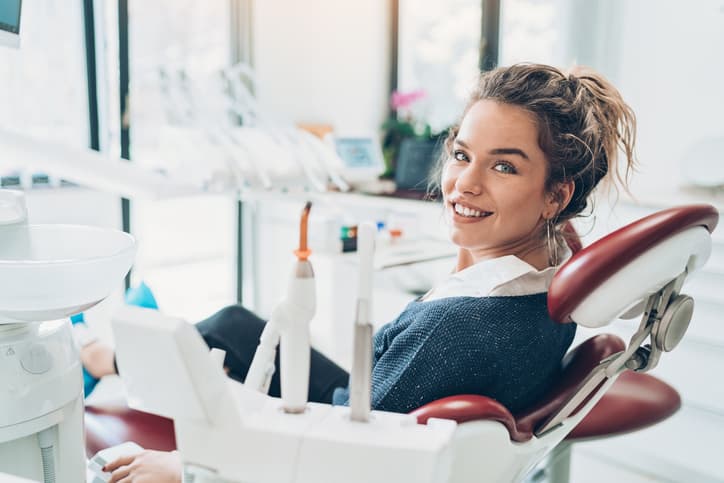 Does the thought of visiting the dentist make your entire body tense with fear? You’re not alone. A lot of people have fears about going to the dentist. Sedation dentistry may help by taking away some of the anxiety.
Does the thought of visiting the dentist make your entire body tense with fear? You’re not alone. A lot of people have fears about going to the dentist. Sedation dentistry may help by taking away some of the anxiety. What Is Sedation Dentistry?
Sedation dentistry typically uses medication to help patients relax during dental procedures. It’s sometimes referred to as “sleep dentistry,” although that’s not entirely accurate. Patients are usually awake with the exception of those who are under general anaesthesia.
The levels of sedation used may include:
- Minimal sedation — you are awake but relaxed.
- Moderate sedation (formerly called “conscious sedation”) — you may slur your words when speaking and not remember much of the procedure.
- Deep sedation — you are on the edge of consciousness but can still be awakened.
- General anaesthesia — you are completely unconscious.
What Types of Sedation Are Used in Dentistry?
The following types of sedation are used in dentistry:
- Inhaled sedation. Nitrous oxide — otherwise known as “laughing gas” — combined with oxygen through a mask that’s placed over your nose. The gas helps you relax. Your dentist can control the amount of sedation you receive, and the gas tends to wear off quickly.
- Oral sedation. Depending on the total dose given, oral sedation can range from minimal to moderate. Typically, you will be administered a medication while at your dental office, under the guidance of your dentist, this pill is typically Halcion. Which is a member of the same drug family as Valium, and it’s usually taken about an hour before the procedure. The pill will make you drowsy, although you’ll still be awake. This is the type of anaesthesia most commonly associated with sedation dentistry. This sedation can vary from patient to patient, and it is required to sustain from eating and drinking prior to your appointment. Your dentist will also require you to have someone take care of you throughout the day after the procedure, and you will not be allowed to operate a motor vehicle.
- IV moderate sedation. You receive the sedative drug through an intravenous. This method allows the dentist to continually adjust the level of sedation. You would also have to follow similar protocols that the oral sedation has in place following the procedure.
- General anaesthesia. You will be administered medications that will make you unconscious — deeply asleep — during the procedure. While you are under general anaesthesia, you cannot easily be awakened until the effects of the anaesthesia wear off or are reversed with medication. This type of sedation is also typically done in a surgery setting, with an oral surgeon, anesthesiologist, and/or registered nurse. This is the most intense type of sedation and something your general dentist would refer you out for.
Who Can Have Sedation at the Dentist?
Sedation is most appropriate for people with a real fear or anxiety that is preventing them from going to the dentist.
Sedation dentistry may also be appropriate for people who:
- have a low pain threshold
- can’t sit still in the dentist’s chair
- have very sensitive teeth
- have a bad gag reflex
- need a large amount of dental work completed
Sometimes, children are recommended to have sedation to help them feel more relaxed, and in turn, make them not fearful of dental procedures in the future. Nitrous oxide tends to be safe in children, and just about any dentist can administer it.
Can Any Dentist Perform Sedation?
Most general dentists can administer minimal sedation, such as nitrous oxide or oral medication. However, only a small percentage of dentists who have completed the necessary training in deep sedation and general anaesthesia with the approved facilities can administer more complex techniques. These dentists are typically oral and maxillofacial surgeons and general dentists with extra training in this type of sedation.
How Safe Is Sedation Dentistry?
As with most medical procedures, there can be added risks when sedation is involved. Your doctor and dentist will go through your medical history to ensure what type of sedation may be the best option for you. Your dentist should be able to explain any risks that may be involved once completing a routine examination.
It’s important to make sure that your dentist is trained and qualified to administer the type of sedation you will be receiving. To be more informed, you should make sure the following things are done:
- Before the procedure, your dentist should go over your medical history. Your dentist should also determine whether you are an appropriate candidate for sedation and ask about any medications you’re currently taking.
- You should ask what dose of the sedative is appropriate for your age and health.
- You should receive a form detailing the risks of the procedure. Go over it carefully with your dentist. Ask questions if you’re unclear on any of the wording.
